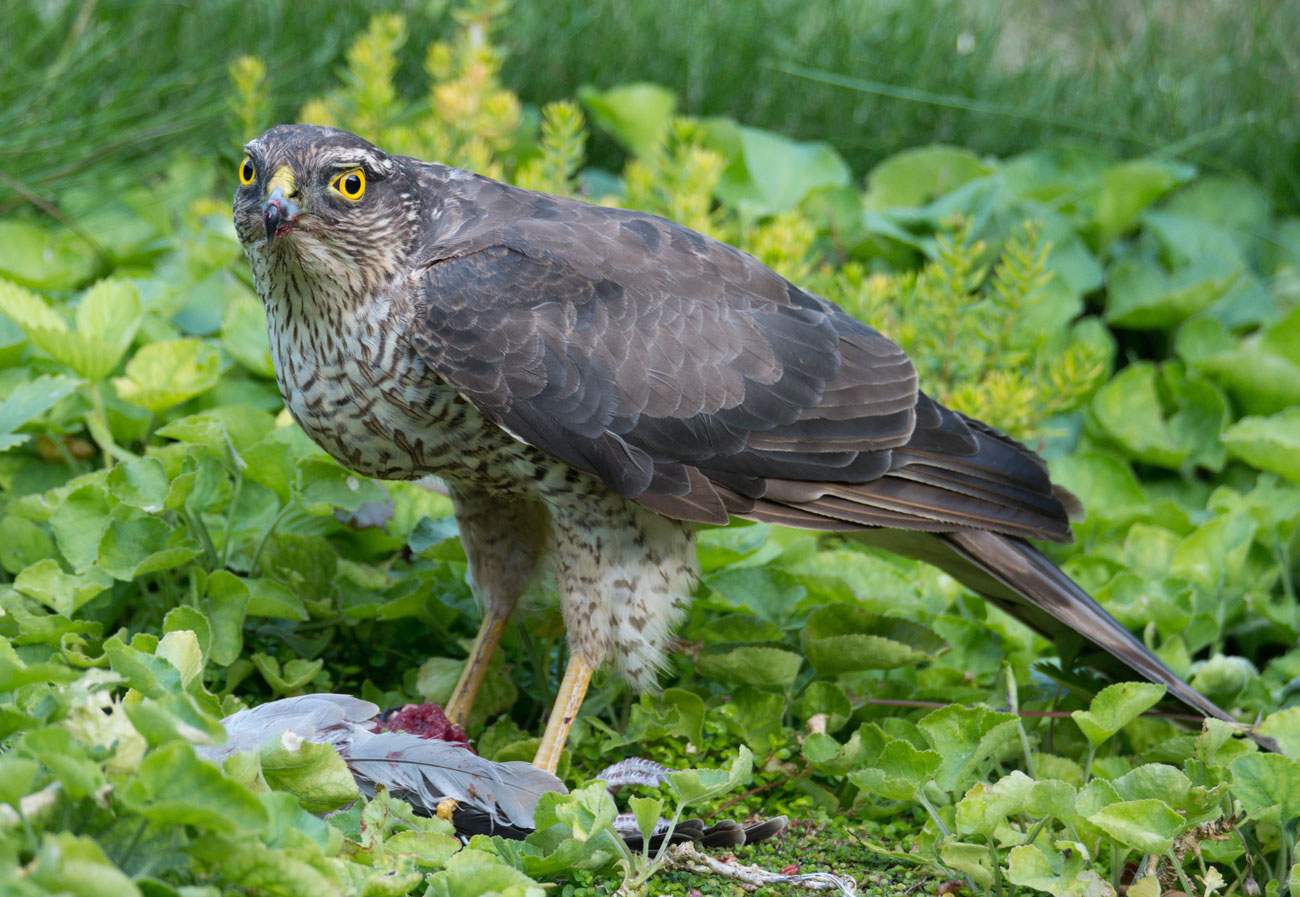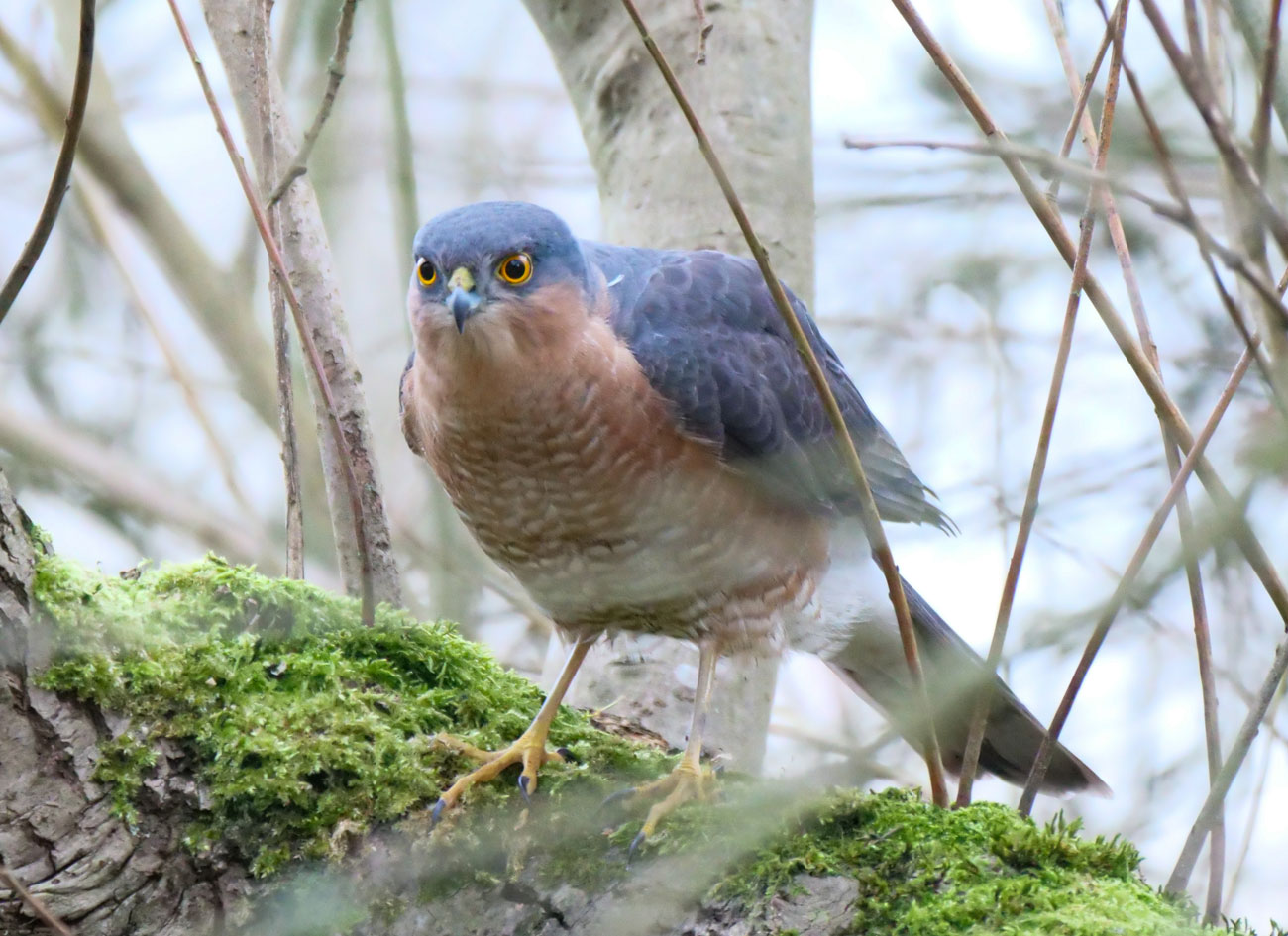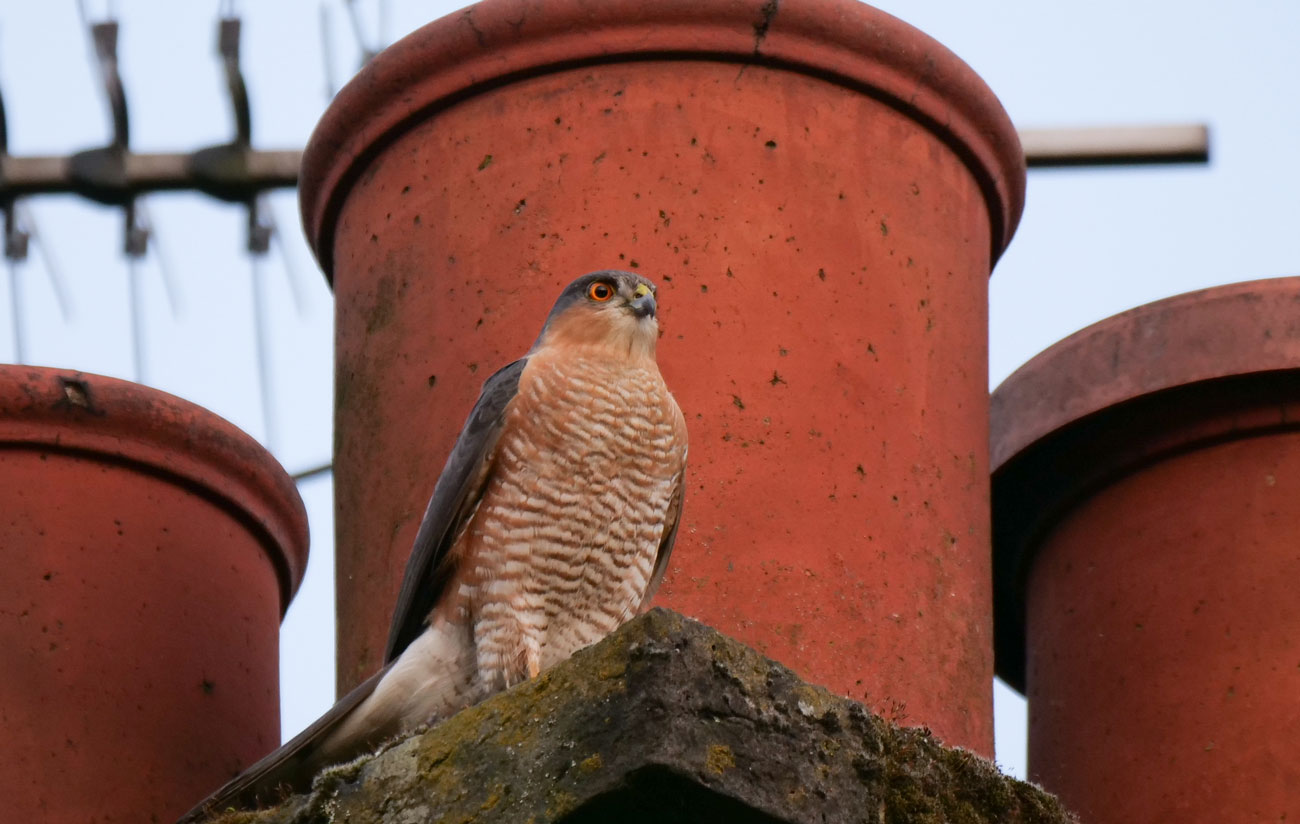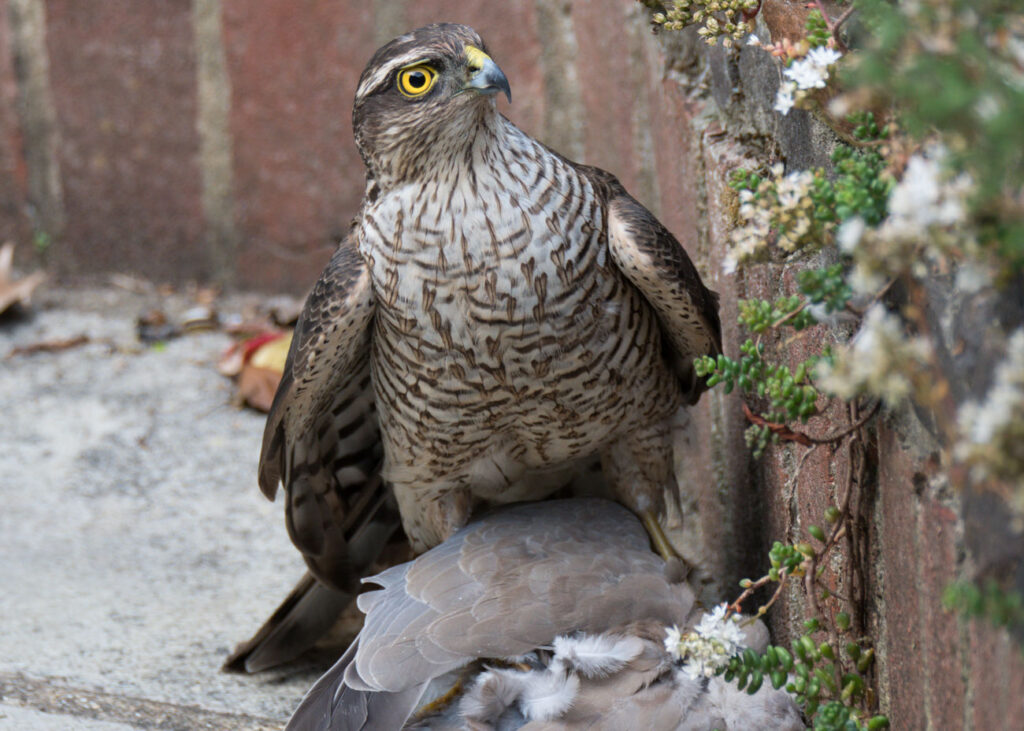
A Sparrowhawk eating a Collared Dove in a Surrey garden © Mark Davis
Suddenly all peace in the garden is shattered.
The ever-watchful Blue Tits switch tracks from soft twittering to explosive anxious alarms – and I know what will happen next.
Wood Pigeons immediately crash out of the oak trees. It sounds like someone is beating carpets as their wings smash against the leafy branches.
Frenzied birds are heading off in all directions in a mad rush to get airborne and away from danger.
A Blackbird flies fast and low over the lawn giving a clucking distress call, Great Tits scold, and a Robin dives for cover as its song gives way to a fast ‘clicking’ alert. House Sparrows scatter noisily deep into a conifer.
Panicked Starlings skid across the sky from 100 metres away and Magpies whirl their football rattles. Watch out! There’s a Sparrowhawk about!

A male Sparrowhawk © Mark Davis
After a brief pause – whoosh! The intruder, seen earlier in the day circling the area on a recce mission, hurtles alongside the tree line at fence level. Until now you have not seen him. But he has had your garden under surveillance for quite some time.
Expertly he weaves his way around bushes and tree trunks as if he has been electronically programmed to avoid all obstacles. The male Sparrowhawk, like a world class Premiership football winger, never loses speed and is gone before most people realise he is approaching. A Stealth bomber in feathers.
These birds have been much persecuted by gamekeepers in the past – and in some parts of the country they and other raptors are still victims of illegal poisoning, trapping, and shooting.
The use of now banned pesticides took their toll after World War II and in some English counties they became extinct, apart from the plethora of shot and stuffed Sparrowhawks ‘living on’ in ageing collections in country houses. That goes to show their popularity among Victorian gamekeepers who were also out a hunting.
But in recent years the species has bounced back and can be seen most easily when it is ‘casing the area’.
Soaring high above us one minute on stiff, rounded wings, it will fly away with a characteristic flap-flap-glide. And then if you are lucky it tucks in its wings and dives spectacularly down towards earth for some unsuspecting prey.

Ever watchful – a male Sparrowhawk ready to fire up his engine, © Mark Davis
If the ‘Sparrowhawk’ hovers then it is not one. Around here that would most likely be the similar sized but pointed-winged Kestrel, or the altogether larger and chunkier Common Buzzard. Up close the male Sparrowhawk is stunning with slate blue upper plumage, and orange around the face and on the gently dark-barred breast.
Like other raptors, the male is notably smaller than the female, which has dark barring across its underparts and a whitish stripe (supercilium) above its fierce yellow eye. Juvenile birds are brownish above with thicker dark bars across the breast and belly.
If you feed birds in your garden then you have a good chance of seeing one close-up because you have provided a potential table of tasty morsels for this raptor. It is not welcome by everyone of course because it ‘scares our pretty little Blue Tits and friendly House Sparrows’. But if you feed them then you have to remember you are likely to be giving a meal to their predators too. They go for big birds too.
I get more ‘what’s this bird?’ inquiries about the Sparrowhawk than nearly anything else and it is usually followed by ‘it’s sitting on our lawn eating a Wood Pigeon.’ I have had this happen myself in the garden on a few occasions and have been surprised when this bird of prey has even been able to get airborne again.
One female sat on the grass atop its soon-despatched victim. I went down to Cranleigh to do some shopping, arrived back two hours later, and was surprised to find the bird was still there, munching the last of the Wood Pigeon and looking alert all around it between each mouthful. With scary eyes like that, presumably nothing was tempted to shift it.
After he departed, I examined the pile of plucked feathers on the lawn. Only the Wood Pigeon’s legs remained.

A successful capture by the garden wall, © Mark Davis
You can see Sparrowhawks in all months of the year. But they are busiest in the Spring when you will most easily be able to turn the tables – so to speak – and espy them, performing their thrilling rollercoaster display flight high in the sky.
Twitter – @Crane_Spotter
Click here to see all of Robin Stride’s previous Crane Spotters.











